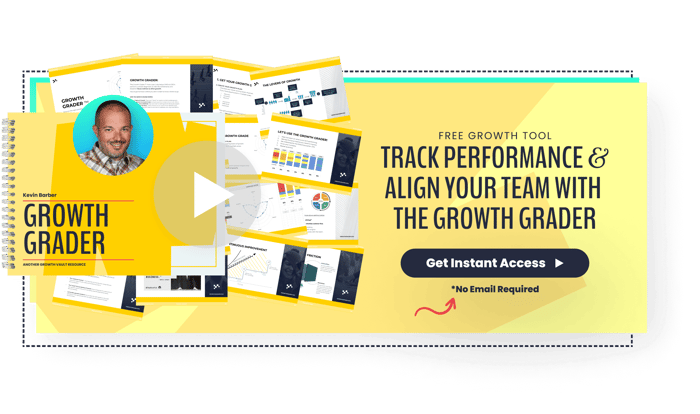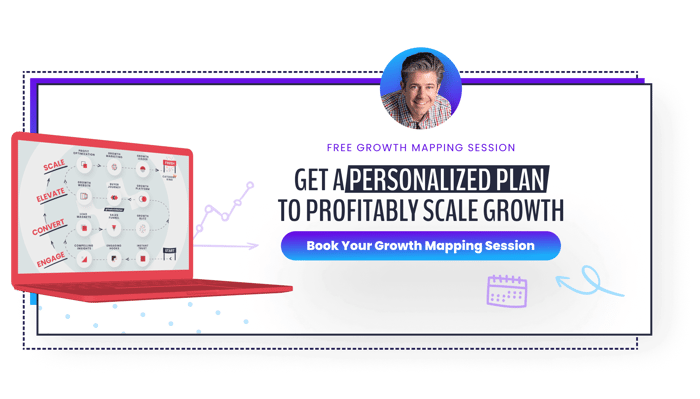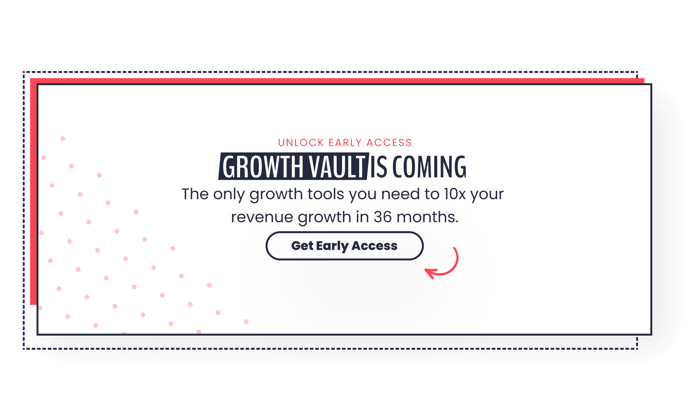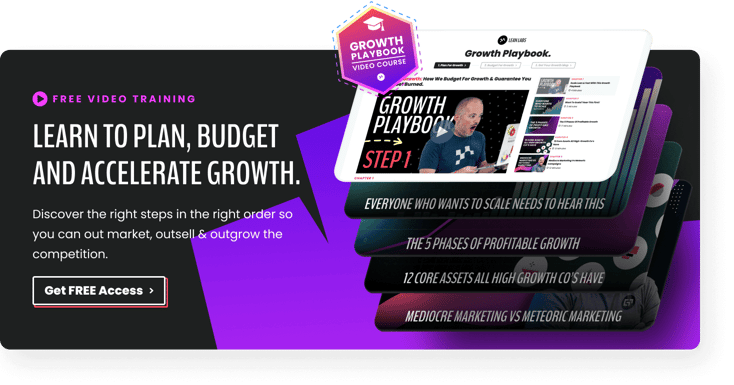Looking to improve search rankings and drive more traffic to your blog? A Skyscraper post could be the answer. Skyscraper posts, which have increased in popularity over the past few years, are great for establishing yourself as an influencer and increasing traffic from search.
However, Skyscraper content isn't easy to produce.
These posts require a lot of patience and research. Without taking an effective approach, you could invest a lot of time and resources into creating content that isn't going to perform.
That's why we use a specific format and blog post template to put together all of our Skyscraper posts. This template can be the difference between a highly engaging post that accumulates a ton of high-quality links, and a post that falls flat.
How The Skyscraper Blog Post Template Works
The initial concept of "Skyscraper content" came from Brian Dean, founder of Backlinko. Dean supports the belief that marketers need to be strategic. Like any other part of business, Dean feels, the real key to creating content is being competitive, and learning how to promote.
This is where the Skyscraper angle comes in. Essentially, you conduct keyword research and find a specific keyword or key phrase to target. Then, you find the top ranking pieces of content for that keyword, and create a new piece of content that's way better than all those pieces put together.
And that's really important - the content must be exceptional.
When content is truly great, you can't help but share and engage with it. You bookmark that content, and revisit it. So, when it comes to Skyscraper posts, the quality is absolutely essential.
After launching the post, you can reach out to everyone who linked to the initial content you found (competitor content) and ask them to link back to you. If you're successful, you'll bring in a ton of great backlinks, and a lot of traffic to your blog.
Here is the process we take to write Skyscraper blog posts, using the blog post template we use.
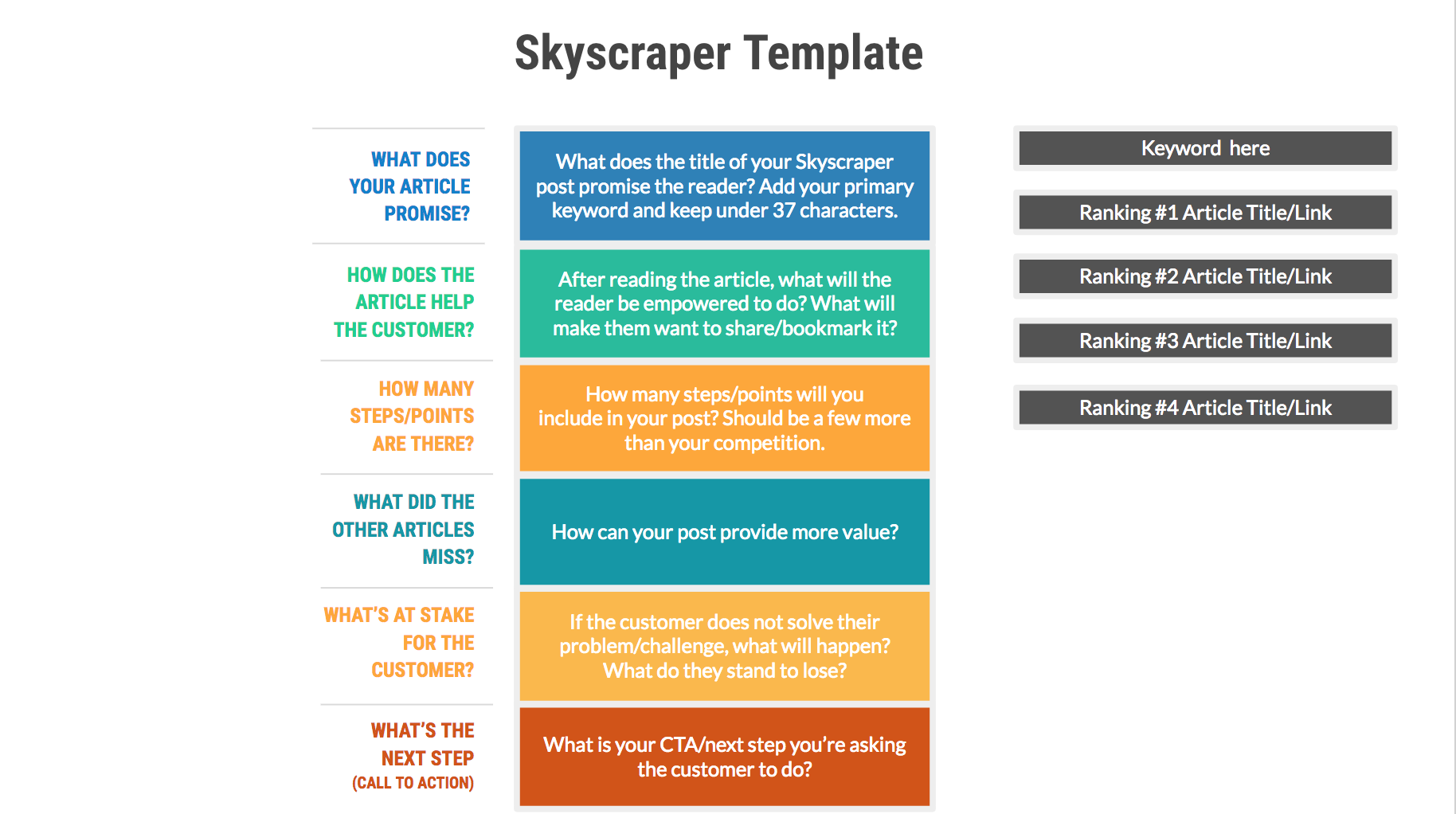
Step #1 - Pick An Exceptional Topic
To start, you need to find a great keyword.
For beginners, selecting a topic and conducting the essential keyword research should come before picking out blog titles. This way, you can ensure that you're targeting keywords and subject matter that your customers are actually interested in.
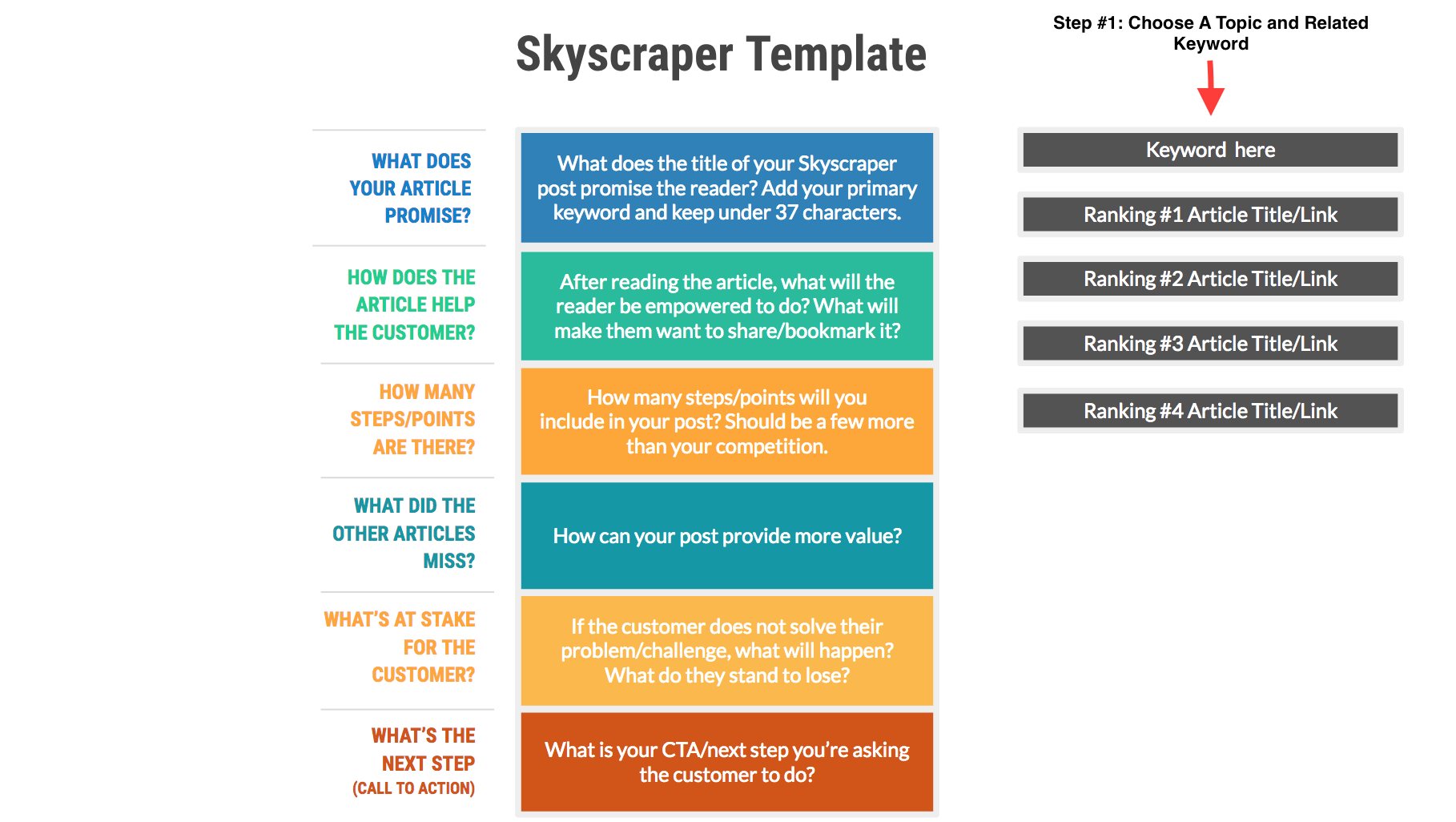
Then, you will find the top content that's already ranking for your keyword. That's the content you're going to analyze, extract valuable insights from, and use to create an awesome piece of content.
For example, "skyscraper blog post" comes up with these results. We will work with the top four (it actually includes this post!)
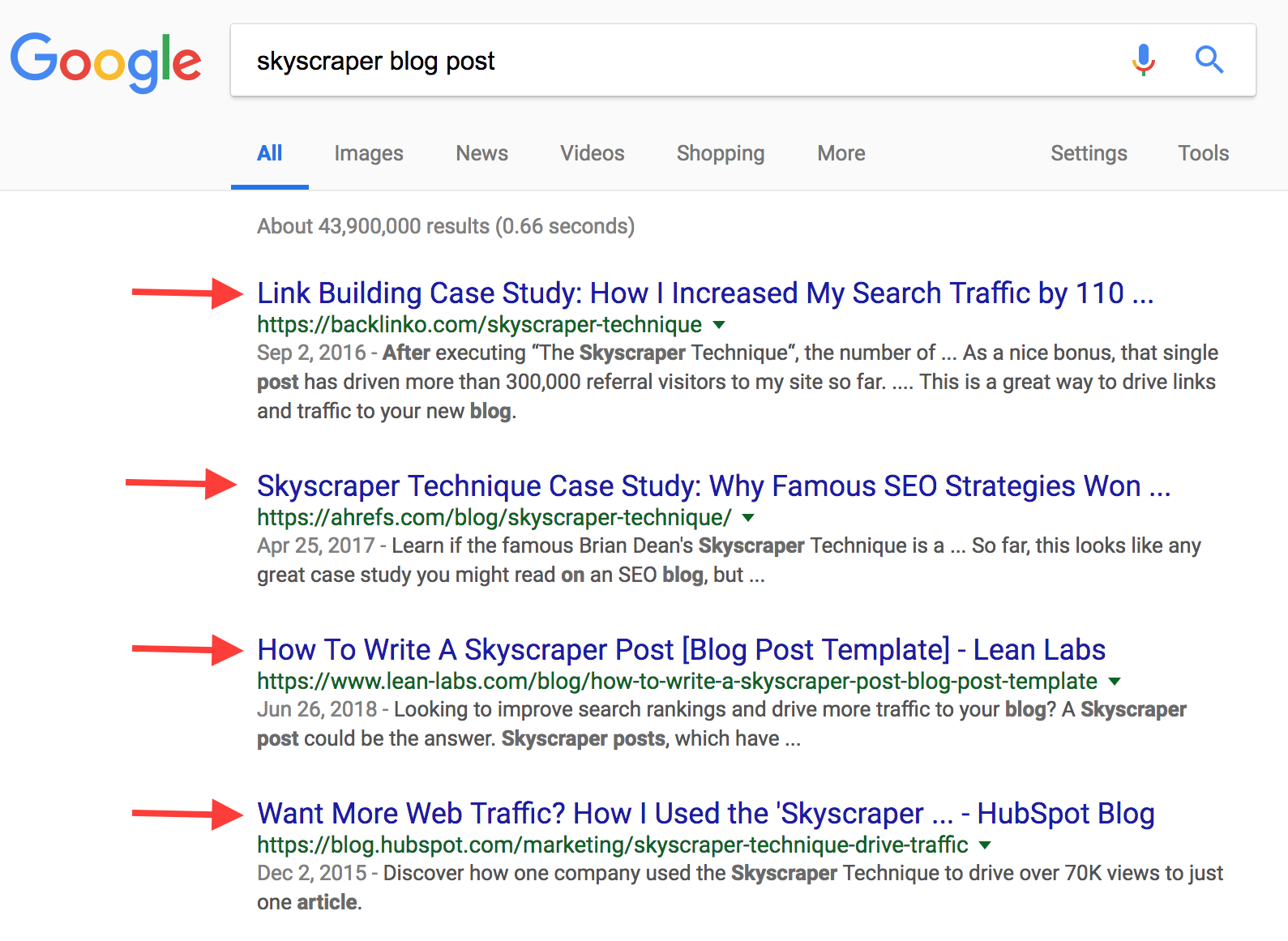
Basically, you will read these posts and take the best points, refresh the content, and write your own original copy.
Why? Because customers deserve fresh content.
If there are posts on the first page of Google from 2015, (like the last one from HubSpot) and if they have outdated content, they aren’t going to serve your customer very well.
Customers like variety.
While many customers go back to the same resources over and over, they want to hear different opinions and approaches as well. Even if you're not a top influencer like Brian Dean, your expertise matters.
Top ranking doesn't guarantee quality.
During your initial research stages, you might notice that the top 1-3 ranked posts for your keyword aren’t really great to begin with. If that’s the case, you should rank much easier with better content.
You owe it to your customer to put together a really fantastic resource. That content could very well help potential customers select you over a competitor, and it'll help build up your influence in your given industry.
It's not personal; it's business.
Once you have the content you want to outrank, the topic, and the strongest keyword for your post, it's time to put together a title. While this may seem like the easiest part, it's actually quite difficult. The title to your blog post is the hook, the most important factor of initially drawing readers to the content.
It needs to have a unique angle, not just a copy-pasted title from one of the posts you're attempting to outrank. If you're struggling, there are a few headline and blog title generators out there that can help, including HubSpot's blog ideas generator.
Step #2 - Create Readable Long-Form Content
Skyscraper posts do really well, for a couple reasons. First, they include more information than the top ranking pages combined. And second, Google prefers long-form content over normal article length.
Experts agree:
When putting together long-form content, there are a few considerations that ensure higher quality, including:
A great outline. Don't just start writing. Put together an outline, and get someone else to review it before passing it to a writer. That's why we outline our Skyscraper content in the template to ensure we hit the most important points.

The strongest points of the competing content. Using our competitive keyword, explore the content of all of the top 10 results. Without copying or plagiarizing of course, include all the points of all those pieces, and then add even more.
In the second part of our template, we have a grid that helps us identify these points. For each section, you document the strongest and weakest points, and address the call-to-action so you can provide more value.
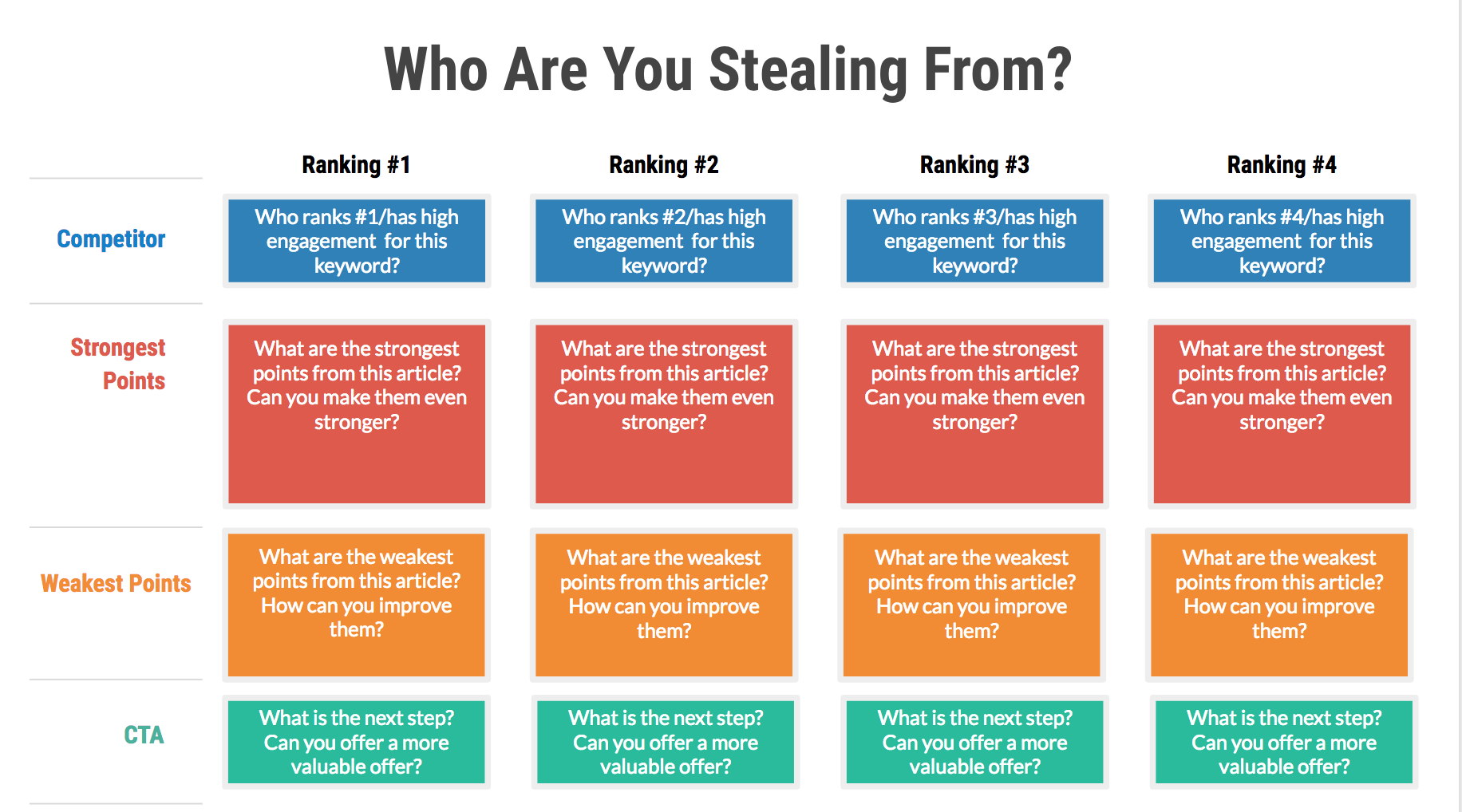
An exceptional writer. Whether it's someone in-house or a freelancer, make sure whoever you get to write the post is capable of it. Don't take shortcuts here. If you decide to go with a less experienced writer, you'll pay for the difference in edits and revisions. UpWork and Reddit are two places you could find a new writer with a lot of experience.
Current statistics and facts. Some writers get lazy with their statistics. Don't pull in numbers from 2005. Find fresh, relevant stats to reinforce your points.
A clear narrative. What's the story here? Imagine your reader as the hero, requiring resources and tools to continue in their quest. What is that quest, and how will your post guide them through it?
Step #3 - Exceptional Design
People skim - it’s just what we do to internet content. Without clear headings, sections, and an overall design that helps improve the flow of the post, you'll lose readers along the way. So while the writing in your content needs to be great, the post should also be easy to read.
There are a few items to check off while putting together Skyscraper content:
Great visuals. Aim for a healthy blend of photography and images of statistics or charts. Focus on providing visuals that add value to the post, and not just stock images. Pexels and Canva are both great resources for generating these images.
The right dimensions. Images that are too long, or too small, can distract the reader.
Skimmable headings. Headings need to be formatted intentionally. Make sure that your headings are H2-H5 tags, and the copy naturally guides the reader from beginning to end of the post.
Noticeable CTAs. Every blog post should include some kind of next step, or call-to-action. When putting together this visual, make sure it's simple. The button should have enticing language that communicates what will happen next, such as "Download Now" or "Sign Up For A Demo." HubSpot has some great CTA templates that can provide guidance.
Step #4 - Valuable Information
A great skyscraper post is more than length - it's about tremendous value. Aside from the quality of the writing, which we've already stressed, find ways to give more value to the reader.
If this post was the only resource, how could you set them up for success?
What specific tool would give them what they need to take the next step in their process successfully?
Consider Offering:
Templates. What kind of template could your reader use that's relevant to the Skyscraper post? This could be a downloadable Word .doc or a Google Drive Spreadsheet.
Resources. Digital Marketer has a great comprehensive list of marketing resources, with everything from website tools to email marketing tools.
Calendars. For marketers, a free editorial calendar template can be enticing. What kind of calendar could get your customers organized?
List of ideas. Sometimes, customers just need ideas to get them started. In the marketing world, given all of the blog content we create, a lot of sites just provide .pdfs with blog post title or keyword ideas. These types of resources are valuable, but are really easy to make.
Worksheet. We have a great goal setting worksheet that we give away for free. It's beneficial for the reader, because it's a handy resource, and beneficial for us, because we can get an idea of the kinds of financial and objectives our target companies are setting.
The key to developing and providing these types of great resources is an exceptional understanding of your customer. If you draw a blank on the kind of valuable content you could generate, consider going back and doing a customer journey mapping exercise. This can help you figure out where customers experience friction during their experience with you, and inspire potential content.
Why We Use A Blog Post Template
Given the complexity of creating quality content, a Skyscraper blog post template can provide necessary structure. Otherwise, it's easy to get off track and end up with a long, cumbersome post that doesn't address the needs or interest of your audience. That's why we came up with our Skyscraper Blog Post template to begin with.
However, these templates are just a smaller part of a larger content marketing strategy. Before we write anything, we come up with a long-term plan for developing and deploying great blog content. That way, we know that we can generate the most value from each and every one of our posts.
If you're looking to get started with a better plan for your marketing, we can help. In our Game Plan offer, we provide guidance to companies looking to outline more effective strategies. Click here to see if we're a fit.
![How To Write A Skyscraper Post [Blog Post Template]](https://www.lean-labs.com/hs-fs/hubfs/blog_post_imgs/Lean-Labs_blog-post-template_.png?width=600&height=315&name=Lean-Labs_blog-post-template_.png)
